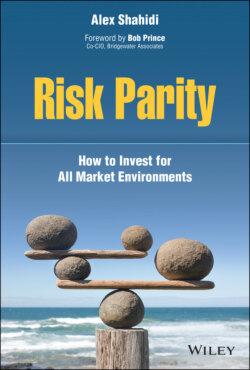Читать книгу Risk Parity - Alex Shahidi - Страница 11
Foreword
ОглавлениеAlex is doing a great service to the savers and investors of the world and, in particular, those who are responsible for their livelihood in retirement. Statistics show that the average individual investor has substantially underperformed most passively held asset mixes. And the history of markets shows that every asset class in every country over the past 200 years has suffered massive wealth destruction at one time or another, meaning a decline in real purchasing power of 50% to 80% within the course of a decade. Even cash is a very risky asset when you view it through the lens of inflation‐adjusted returns. Today, cash and bonds are particularly risky, because policy makers have pushed real interest rates into negative territory and are holding them there as a means of reducing the burdens on debtors, shifting that burden to the retirements of savers and asset holders.
In recognition of the risks, we at Bridgewater believe that the most reliable solution is a balanced portfolio. By balanced I mean a portfolio whose risk allocation is distributed across a set of asset classes which have offsetting exposures to shifts in the economic environment. Shifts in economic growth and inflation exert a dominant influence on asset returns. Therefore, you want a mix of assets that neutralizes these influences on returns.
At Bridgewater we refer to this as the All Weather approach: a portfolio that is balanced to the influences of economic growth and inflation, enabling performance across all environments. Many of us have applied this All Weather approach for decades to our own personal portfolios and for the largest and most sophisticated institutional investors in the world. In time, the approach has become known as Risk Parity, and a number of professional asset managers developed their own way of doing it. There are significant differences, but what they all have in common is a balanced allocation of risk across complementary asset classes.
What Alex is doing in this book is making this balanced approach available to anyone who wants reliability of investment returns over time, regardless of how economic conditions transpire. There is no fluff or bluster in the book. Each chapter is a relevant building block toward a well‐balanced whole. This is not a book of empty assertions or unproven theories. It is backed up by research and logic, which he presents in each chapter. The research and logic have been borne out through time.
We at Bridgewater have known Alex for a very long time and can attest to the thoughtfulness and thoroughness of his approach. He describes his journey; we watched it unfold first‐hand. There is legitimacy and authenticity to what follows. I hope that you take it seriously and put it into action.
Bob Prince
Co‐CIO, Bridgewater Associates
